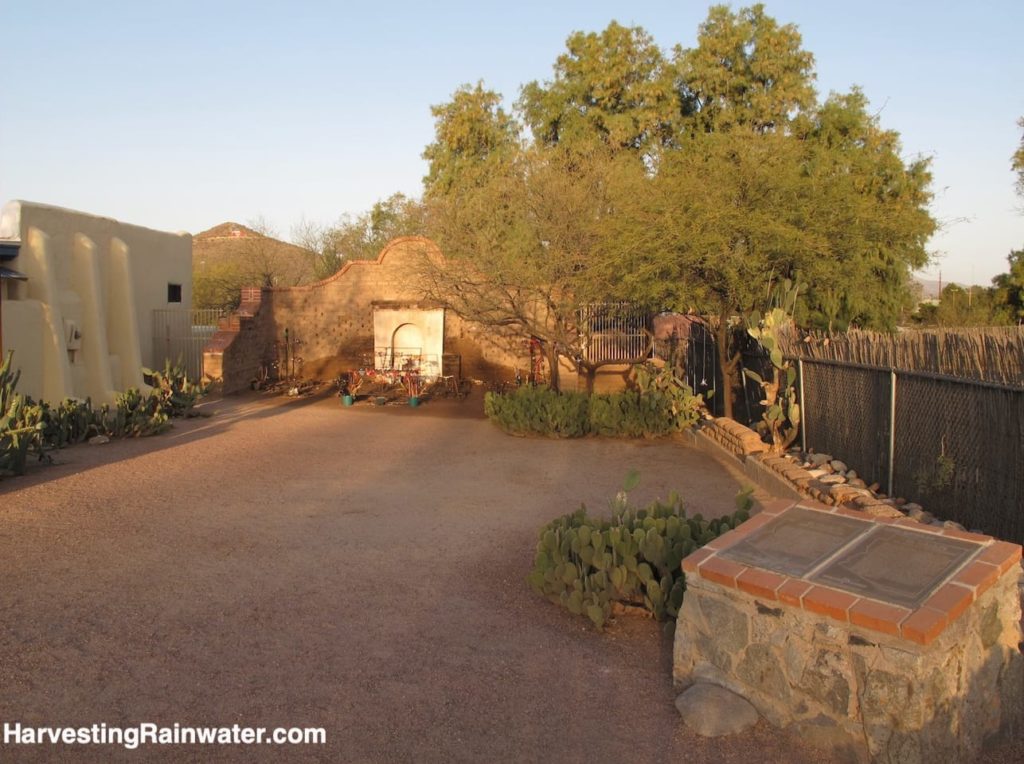El Tiradito Wishing Shrine & El Ojito spring site
It used to be that drinking water in Tucson was primarily obtained from year-round flow of the Santa Cruz River, numerous natural springs such as El Ojito, and shallow hand-dug wells thanks to our once high groundwater table.

Photo: Brad Lancaster
The easily accessible Santa Cruz River, springs, and shallow groundwater began to change in the 1870s when Adam Sanders and Joseph Phy began to sell water from their hand-dug well on south Main Street (near El Tiradito Wishing Shrine) at 5 cents per bucket. According to “The Lessening Stream: An Environmental History of the Santa Cruz” by Michael F. Logan “The two entrepreneurs filled an iron tank on a wagon from their well and traveled daily through town selling water. Within 25 years municipal water use in Tucson would progress from well water sold by the bucket, to a piped supply tapping the aquifer. When the (water) mains were first opened in September 1882, an almost immediate decline in the water table downstream resulted.”
The El Tiradito shrine may be the United States’ only Catholic shrine dedicated to the memory of a sinner instead of a saint; and where legend has it that if you light a candle at the shrine and make a wish, the wish of the candle-lighter will be granted if the candle is still alight come morning.
The shrine also helped save the surrounding barrios
The shrine also helped save the surrounding historic barrios from near complete demolition due to sterilizing “urban renewal” efforts in the late 1960s that bulldozed two thirds of Barrio Viejo and built the Tucson Convention Center, downtown police department complex, and La Placita Village Office Complex in its place. If that part of the barrio had not been bulldozed, it would likely be a World Heritage Site today. Community activists galvanized around the shrine in efforts that stopped further destruction of the barrio. See the book La Calle: Spatial Conflicts and Urban Renewal in a Southwest City by Lydia R. Otero for more of the story.
The shrine is on the National Registry of Historic Places, thanks to neighborhood activists such as Rosendo S. Perez, whom an adjoining pocket park was named after. And in between shrine and park you’ll find the La Pilita Cultural Center.
Where:
418 S Main Ave, Tucson, AZ 85701
32.21632276388002, -110.97448060579164
Hours: 6am – 10:30 pm daily, but the shrine never closes
Cost: Free
Dogs on leash allowed
This location is included in the following tours:
See the new, full-color, revised editions of Brad’s award-winning books
– available a deep discount, direct from Brad:

Volume 1

